Welcome to the February 2024 edition of the Curious Tea subscription! Here’s a closer look at the four exciting new teas that we are sharing with our subscribers this month.
For this month the first light tea that we selected is a newly crafted Japanese Oolong that is made in the style of lightly oxidised Taiwanese teas. The second light tea is a classic Long Jing Dragon Well from China that is fine example of a typical green tea suitable for everyday drinking.
For the dark side of the selection we have a black tea from Malawi that is grown by Satemwa Tea Estate and gently smoked over guava wood. Finally the last tea to be featured is a continuation of our exploration of the Taiwanese Shan Lin Xi terroir, this time being a Hong Shui red oolong that features an attractive Mi Xiang honey aroma and taste.
Our Discovery subscription boxes contain 10g taster pouches of all of the above mentioned teas. If you are a subscriber you will benefit from a 10% discount on all teas from our tea shop!
Let’s get into further detail on these teas featured in our February tea subscription boxes.
Kanaya Sayamakaori Oolong
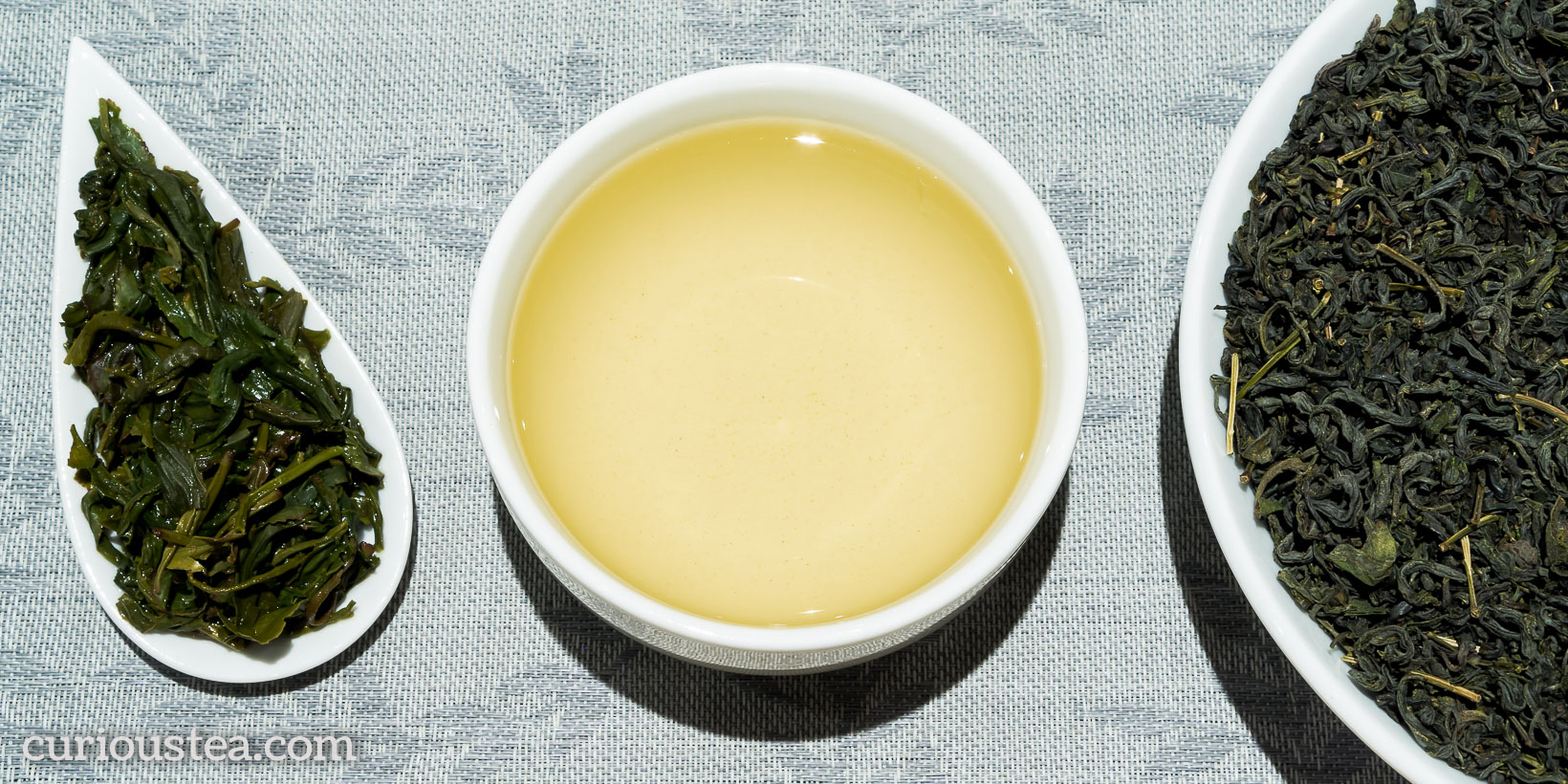
Kanaya Sayamakaori Oolong (金谷町さやまかおり烏龍茶) is a lightly oxidised oolong from Kanaya that is made from the Sayamakaori cultivar. The style is more akin to the popular modern versions of green oolong teas from Taiwan, being reminiscent of the likes of Wen Shan Bao Zhong. It delivers a floral liquor with creamy notes and a fruity aftertaste. We source this tea via a specialist refining factory in Shizuoka who work directly with the farmers. They provide end processing and refining at their small factory in Shizuoka but also support smaller farmers in distributing their teas, developing new tea types and improving their techniques.
This particular Sayamakaori Oolong comes from a small experimental tea farmer in Kanaya. He has been developing new styles of tea making (at least for Japan) in order to diversify his range of teas and introduce some new novel types. This type of oolong is still not very common in Japan. The floral flavour is definitely more reminiscent of green oolongs from elsewhere and the care taken in processing the leaves is also evident. Many Japanese teas have a more broken leaf due to nature of processing and traditional tea grading. So it is always exciting to see teas from Japan that are processed in a way that preserves the shape of the leaf, leading to more complexity in the taste as well as possibilities of an increased number of infusions possible from the same leaves. You may also be interested in trying another experimental tea from the Kanaya farm, a ‘bug-bitten’ Benifuki Honey Fragrance Wakocha.

The Sayamakaori cultivar itself has been registered since 1971 and it was originally developed from Yabukita cultivar plants. The cultivar is reasonably popular in Japan and it is renowned for having a distinct aroma. It is mostly intended for the production of sencha but in this case we think it achieves a particularly nice result as an oolong. Due to high catechin content, it is also sometimes used in black tea making. Perhaps not quite as aromatic as oolong teas made from the Koshun cultivar, it still delivers a liquor that is aromatic, while having a balanced flavour profile.
This Kanaya Sayamakaori Oolong consists of large lightly oxidised curled leaves. The light oxidation leads to a light liquor with a lightly creamy aroma. The fresh taste has dominant floral and creamy notes with a tangy edge. The aftertaste becomes fruitier, with notes of peaches. The lasting effect has a stony, fruity and tangy aftertaste. It’s an easy-going tea that delivers a refreshing flavour. There is just a touch of dryness evident at the very end of the tasting. This is an interesting take on a lightly oxidised oolong and we urge you to try it, especially if you are a fan of lightly oxidised oolongs.
It is best brewed at 80°C for 2-3 minutes according to your taste. It can be brewed 3+ times depending on your taste preferences. This tea is best brewed in a way similar to other green oolongs, so we encourage to experiment based on your favourite method of brewing those.
You can also buy this Kanaya Sayamakaori Oolong tea in our online shop.
Long Jing Dragon Well
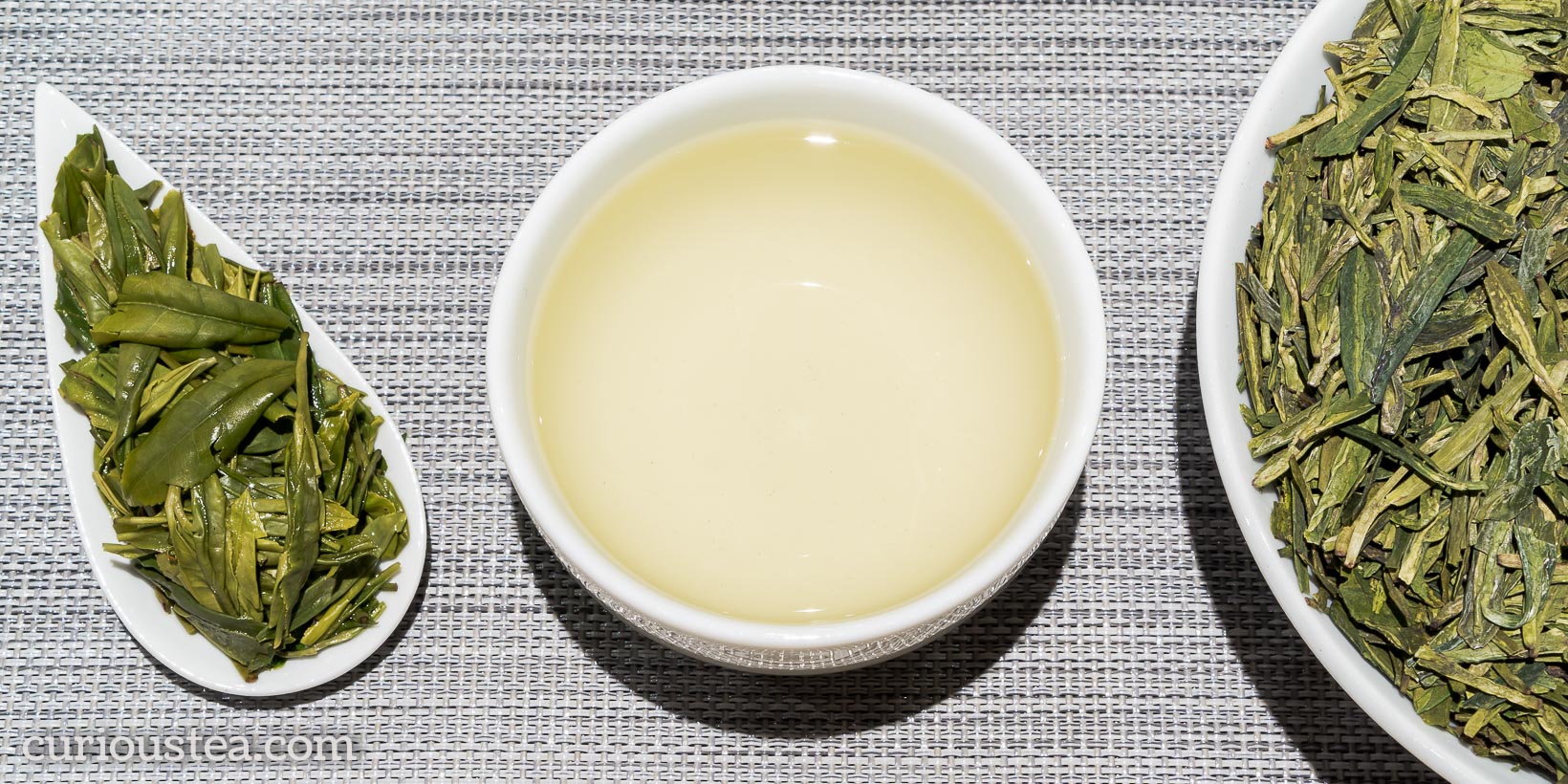
Long Jing (龙井) Dragon Well is an absolutely classic Chinese green tea. Combining both vegetal and nutty flavours, it is a sure crowd pleaser! Grown in Hangzhou of Zhejiang Province, the core growing area of Long Jing Dragon Well tea, this tea was picked on 12 April 2022. Unlike our Long Jing Ming Qian Dragon Well, this tea is from a slightly later harvest time, which results in a fuller profile and a more attractive price point.
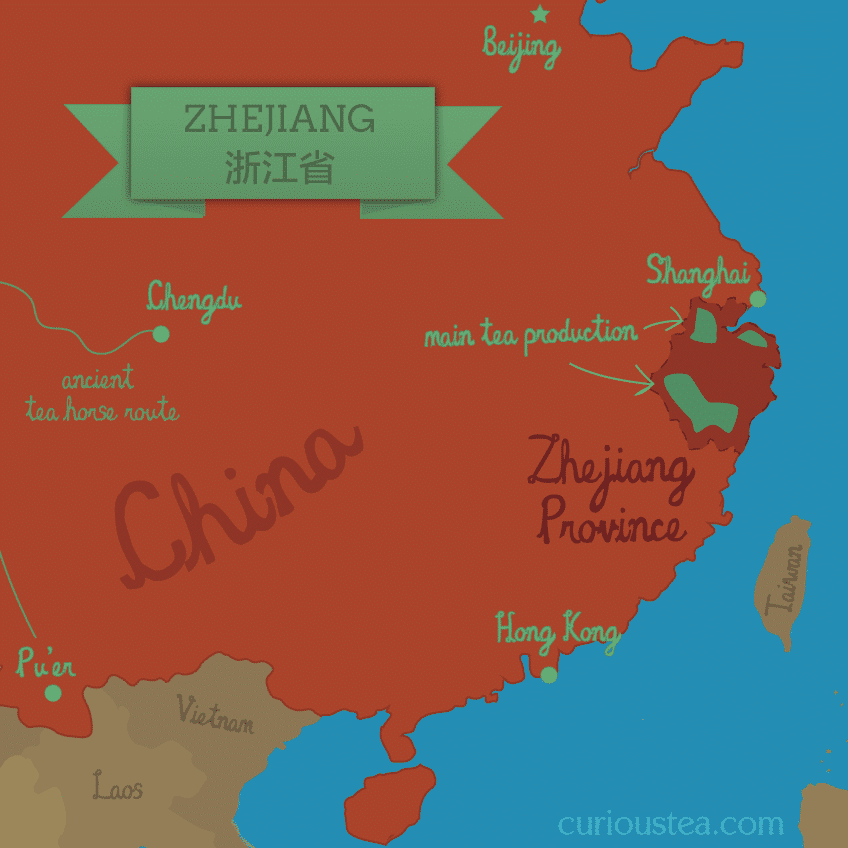
Long Jing Dragon Well is perhaps the most famous and popular tea in China. There are many legends and versions that try to explain the name of this tea. In our favourite legend of the origin of the name, a monk wanted to come to the aid of villagers of an area that has been suffering from a drought. The monk implored a dragon that lived in a well to help the villagers. After that the monk persuaded the villagers to pray and, with the dragon helping out, it miraculously started to rain. To celebrate this, the tea was named after the event – Dragon Well.
Long Jing Dragon Well is also considered to be one of the Famous Teas of China. As with all green tea, the oxidation process has to be stopped by heating the tea, and in the case of Dragon Well this is achieved by frying the freshly plucked tea leaves in a wok for about 20 minutes. If the oxidation process is not halted, the enzymes naturally present in the tea will oxidise it, resulting in oolong (partially oxidised) and black (fully oxidised) styles of tea. This tea is still mostly produced by hand as the wok frying requires great skill.
This particular Long Jing Dragon Well has green flat leaves, which is the classic appearance for this tea. When brewed it produces a bright light golden liquor with a slight vegetal aroma. The balanced flavours are a little vegetal, nutty and creamy with a mouth watering liquor that has a pleasant clean finish and minimum astringency. There are also notes of peppery capsicum and dandelions, leading to the overall impression of a fresh vegetal character.
This tea is best brewed with at 80c for 2-3 minutes and can be brewed multiple times.
You can buy this Long Jing Dragon Well green tea in our online shop. You can also browse all Long Jing teas that we currently have on offer!
Satemwa Guava Wood Smoked Black
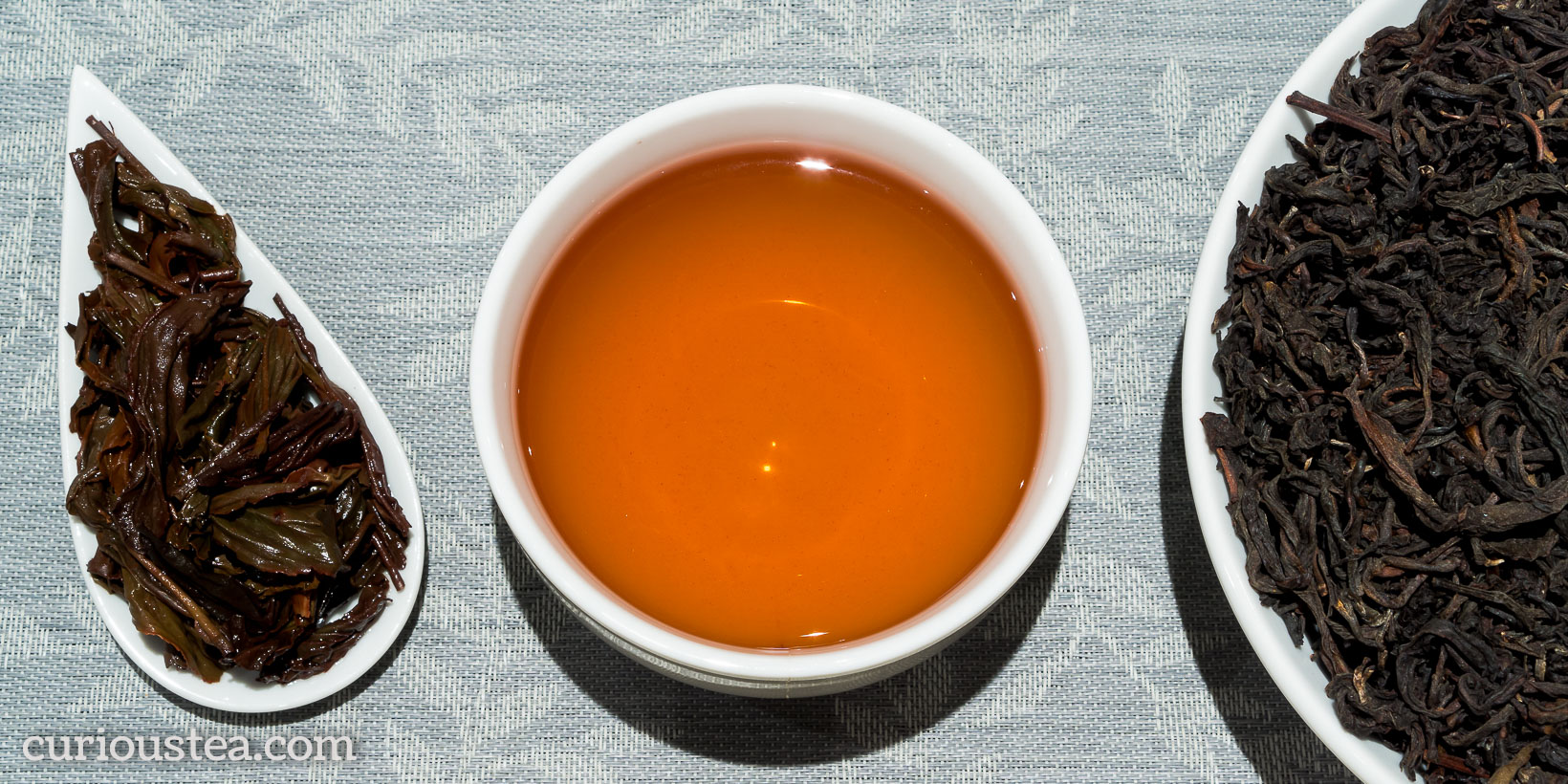
Satemwa Guava Wood Smoked Black is a lovely lightly smoked black tea from Satemwa Tea Estate in the Shire Highlands of Malawi. Made from a blend of cultivars, it undergoes careful smoking using guava wood to achieve a finely balanced flavour. It has mild smoky and tobacco notes with a dominant fruity taste and pleasant sweetness. We source it directly from Satemwa Tea Estate. The current batch is from the September 2023 harvest.
Location of Satemwa Tea Estate:
Malawi is the second largest tea producing region of Africa after Kenya. Most of it, however, does end up destined for the tea bag industry of the UK and South Africa, being grown on large plantations owned by big multinational corporations. The Satemwa Tea Estate by contrast is family owned and operated. It was founded in 1923 and has stayed in the same family since inception. They have very strong social and environmental responsibility programmes that provide a fair wage to their workers and support to the local communities.
While also producing CTC teas for tea bags and similar applications, Satemwa Tea Estate are also pioneering high end orthodox tea production. For this they are utilising and experimenting with various cultivars found in Malawi, fusing the local plants and terroir with production methods and ideas they collated from visiting tea estates and farmers in other countries. Thanks to these innovative methods, their selection now encapsulates a whole range of teas: unique whites, unusual greens processed using Japanese production methods, oolongs, orthodox blacks as well as dark tea! As part of this process, the team from the Estate had to develop new techniques and even new machinery to produce their special teas.
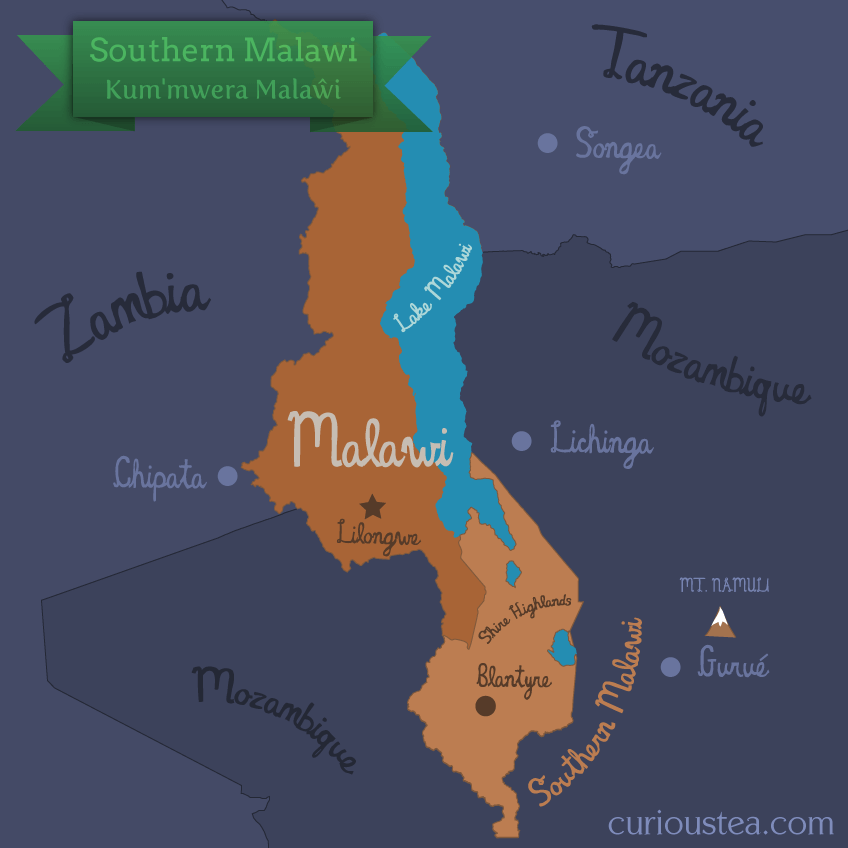
While this Satemwa Guava Wood Smoked Black is a smoked tea, it is not like a typical Lapsang Souchong. The smoking is done delicately in order to compliment the nice base black tea flavour rather than overpower it. The large leaves have a light smoky aroma and produce a dark liquor with excellent clarity. The aroma has a touch of smoke but nothing like from a typical Lapsang, it is more reminiscent of smoked prunes. The same fruity edge with a touch of smokiness runs through the flavours. There are notes of prunes and apricots with a hint of fruity tobacco and just a touch of smoke. There is pleasant sweetness through the taste and almost zero tannins with just a touch of dryness at the end of the aftertaste. This is a balanced tea that we hope will find wide appeal. So even if you are not a huge fan of smoked teas, we urge you to give this one a try!
The pearls are best brewed at 90°C for around 2-3 minutes according to your taste, brewing 2+ times.
You can also buy this Satemwa Guava Wood Smoked Black tea in our online shop.
Shan Lin Xi Hong Shui Oolong
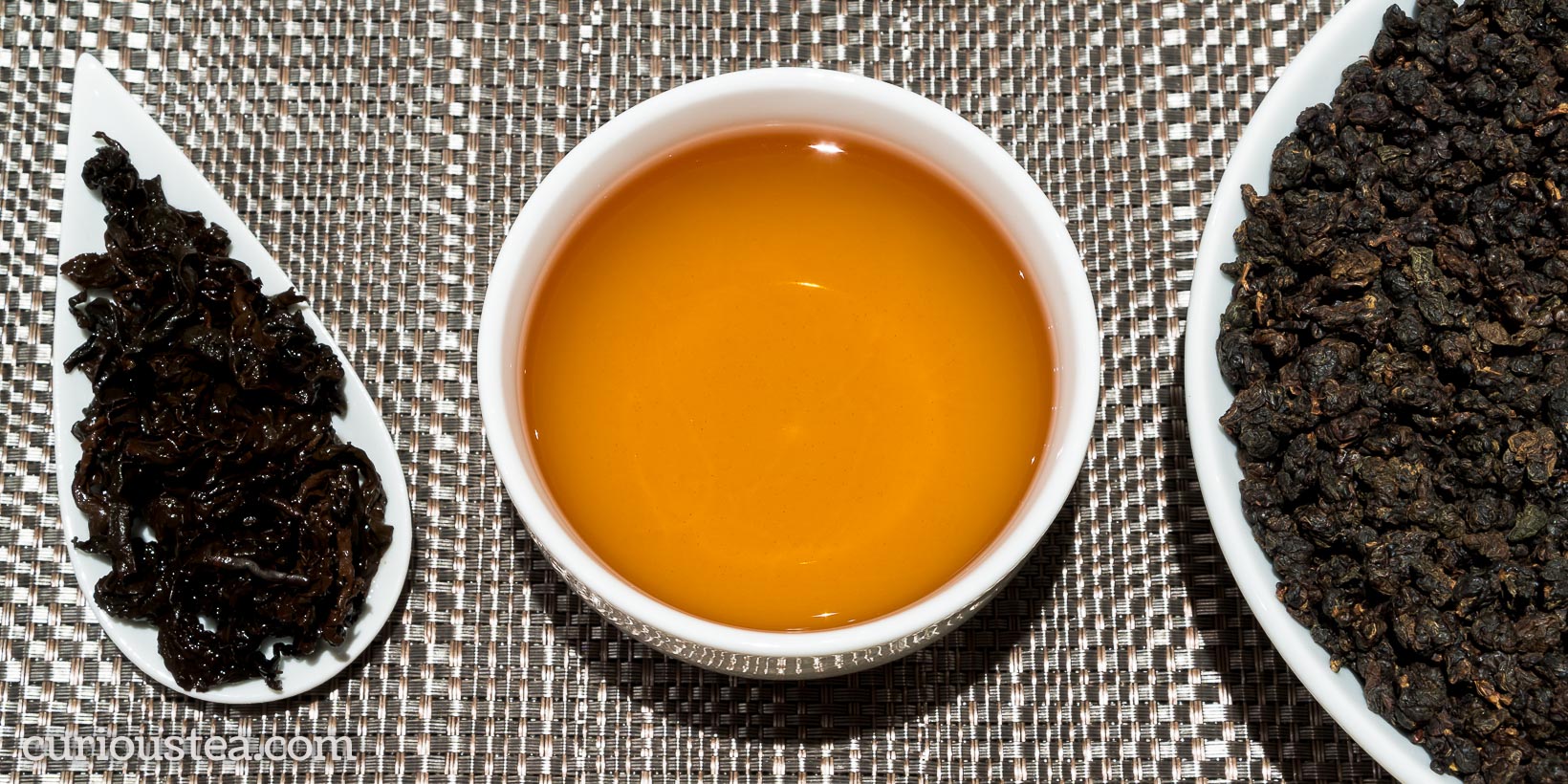
Shan Lin Xi ‘Mi Xiang’ Hong Shui Oolong (杉林溪蜜香紅水烏龍) is an expressive high mountain red oolong from the fantastic Shan Lin Xi (Sun Link Sea) terroir in Taiwan grown at an altitude of 1,200-1,300 metres. This oolong was handpicked and oxidised to about 70-80%, after which it was gently roasted. The roasting helps to bring out the natural mi xiang honey aroma and taste. The complex falvour is sweet and fruity with a lasting honey aftertaste. It is grown by Mr Chen and this batch is from the April 2023 harvest. We source it from Mr Chen via our Tea Master in Taiwan.
Shan Lin Xi (杉林溪) is an exceptional terroir located high in the mountains of Nantou Province. Although Alishan as a terroir may be more famous, it is without doubt that Shan Lin Xi produces high mountain (Gao Shan) oolong teas that are also considered to amongst the best from Taiwan. Shan Lin Xi can be literally translated as Pine Forest Stream from Chinese. However it is also commonly known as Sun Link Sea, an English phonetic approximation of the Chinese Shan Lin Xi, a process referred to as phono-semantic matching in linguistics. So both Sun Link Sea Oolong and Shan Lin Xi Oolong refer to teas from the same terroir. The gardens of Sun Link Sea terroir range in altitude between approximately 1,000 and 2,000 metres. The picturesque mountainous landscape is also home to Shanlinxi Forest Recreation Area, a popular destination for nature hiking that is known for its giant forest trees and waterfalls.
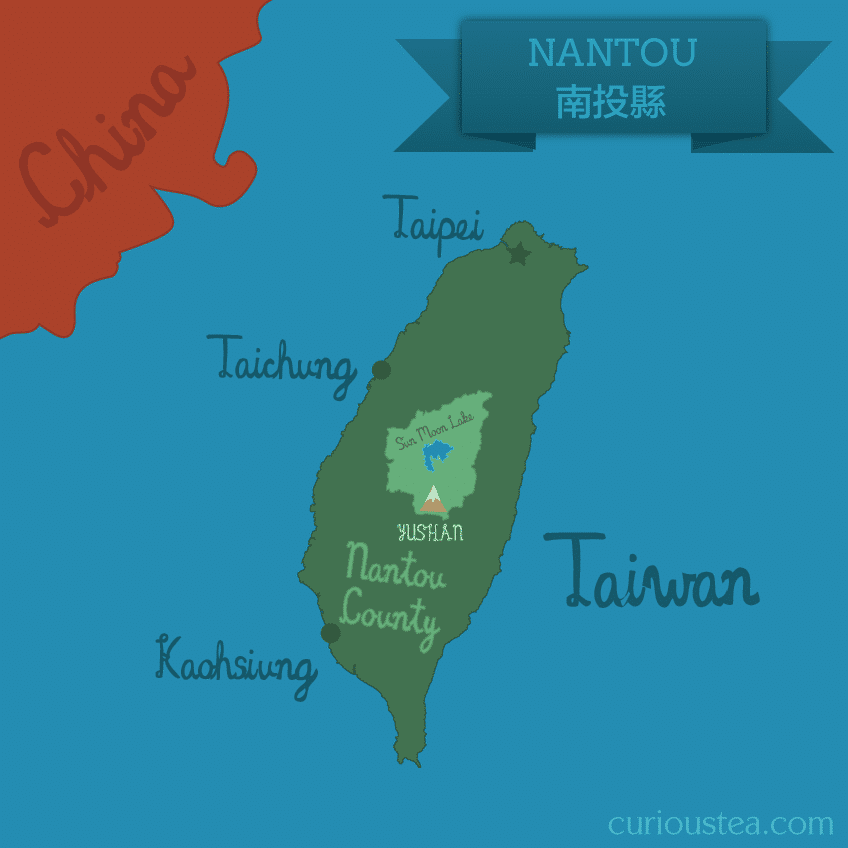
The distinct mi xiang aroma found here is similar to other beauty teas. These are unique teas favoured for their honey-like profile that occurs due to presence of little green leaf hoppers (Jacobiasca formosana) that nibble the tea leaves during growth. The tea plants react to this attack by producing more polyphenols, which during processing give the unique ‘beauty tea’ flavour. These tea jassids are an essential aspect in production of some Taiwanese teas.
This Shan Lin Xi ‘Mi Xiang’ Hong Shui Oolong comes in dark tightly rolled leaves. It produces a medium colour liquor with a honey mi xiang aroma. The gentle baking has also imparted some lightly toasted notes to the scent of the leaves as well as the taste. However since the baking was light, it is finely balanced with other flavours and actually helps to bring out more of the honeyed flavour and aroma. The notes range from sweet, tangy and honeyed fruity flavour to a slightly darker malty and mineral edge. We found it a little reminiscent of a fruity bubble tea based on roasted oolongs! This is a really approachable tea that is a real delight.
We suggest brewing this tea at 90°C for 3 minutes according to your taste. It can be brewed 3+ times depending on your taste preferences. To get the most out this tea, consider using a gaiwan or a traditional clay pot to benefit from the complexity of flavours from repeated multiple infusions. For gong fu brewing we suggest using 6g per 100ml at 95c. Optional 2-3 second rinse, 1st infusion 25s, add 5s to each further infusion. Gong fu style brewing should get many, many infusions from this lovely tea!
You can also buy this Shan Lin Xi Hong Shui Oolong tea in our online shop.
We really do hope that you enjoy this tea selection and are looking forward to the selection in our March boxes, which will be a purple tea special!
Next month we will feature a Japanese green tea crafted from the specially developed purple leaf cultivar. For the next light tea, we selected a wild growing green tea from high altitude forests of northern Vietnam made from plants with naturally occurring purple leaves.
For the darker side of the selection we will be featuring a Purple Needle Dian Hong black tea from Yunnan Province of China that delivers a sweet and fruity liquor. The final purple tea that we selected is a Zi Ya Purple Bud raw pu-erh, also from Yunnan, that has an approachable taste profile.
If reading this has made you curious about our teas, but you don’t yet subscribe to a monthly tea selection, you can sign up for our tea boxes in just a few clicks. We ship worldwide from London, UK.
We always love to hear from you, so if you have any questions, suggestions or just want to chat about tea, email us at contact@curioustea.com, via our Facebook page or via Twitter.

